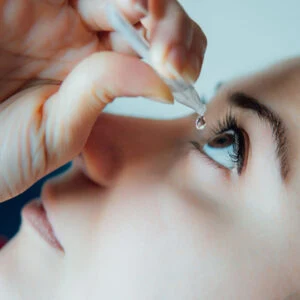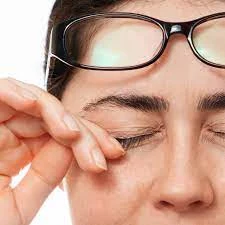In the quest for clear vision, C3R emerges as a beacon of hope for those battling keratoconus. But like every medical marvel, it comes with its set of footnotes. Dive into this guide where we shed light on C3R treatment, not just from its brilliant benefits but also its side alleys of side effects. By the end, you’ll stride confidently, equipped with everything you need to know about this transformative procedure. Let’s embark on this enlightening journey together, ensuring no question remains unanswered!
Contents
What is C3R Treatment?
In the intricate world of eye care, acronyms and medical terms can sometimes cloud understanding. But behind every term lies a story of science, innovation, and hope. Such is the tale of C3R, or Corneal Collagen Cross-Linking with Riboflavin.
At its core, C3R is a non-invasive treatment designed to strengthen the cornea, the clear front surface of the eye. The procedure involves applying riboflavin (Vitamin B2) drops to the cornea and then activating them with ultraviolet (UV) light. This combination induces cross-links, or bonds, between the collagen fibers within the cornea. Think of it as adding supportive beams to a building, enhancing its strength and stability.
But why is this necessary? Enter keratoconus, a condition where the cornea progressively weakens and bulges outward, leading to distorted vision. As keratoconus advances, the cornea’s structure becomes more fragile and irregular. C3R comes to the rescue by halting this progression, adding rigidity and resilience to the cornea, thereby preventing further deterioration.
In essence, C3R is not just a treatment; it’s a preventative shield, safeguarding the eye from the advancing impacts of keratoconus and offering patients a clearer, brighter future.
Immediate Post-C3R Treatment Side Effects
Embarking on the journey of C3R treatment means not only embracing its long-term benefits but also being prepared for the immediate aftereffects of the procedure. While C3R is designed to be minimally invasive, like any medical intervention, it does come with its set of immediate side effects or complications:
1. Eyelid Swelling:
It’s not uncommon for patients to notice a slight swelling of the eyelids soon after the procedure. This is a natural reaction to the treatment, and it typically subsides within 1-2 days.
2. Discomfort or Pain:
A sensation of discomfort or mild pain in the treated eye is expected immediately post-procedure. This sensation is temporary and usually diminishes within the first 48 hours.
3. Light Sensitivity:
You might find your eyes being more sensitive to light, a phenomenon that can last for a few days. Wearing sunglasses can help manage this sensitivity until it naturally subsides.
4. Blurry Vision:
Temporary blurriness in vision is another common side effect, as the cornea begins its healing process. This usually improves within a week.
5. Watery Eyes:
An increased tear production or watery eyes can be expected, as the eye’s natural response to the treatment.
Post-procedure discomfort can be managed with over-the-counter pain relievers, but always consult with your ophthalmologist before taking any medication. It’s essential to note that while these immediate side effects might sound concerning, they’re generally short-lived and are a part of the body’s natural healing process. Following your doctor’s post-procedure guidelines will ensure a smoother and more comfortable recovery.
Tips To Manage Many Of The Side Effects
Every medical procedure comes with its set of aftereffects. While C3R treatment boasts a high success rate, understanding and managing its side effects can ensure a smoother recovery journey. Here are some of the common side effects and how to navigate them:
Managing Infection and Inflammation Risks
 While C3R is a minimally invasive procedure, there’s always a small risk of post-operative infection or inflammation. To combat this:
While C3R is a minimally invasive procedure, there’s always a small risk of post-operative infection or inflammation. To combat this:
- Antibiotic Drops: Your ophthalmologist will prescribe antibiotic eye drops to prevent bacterial infections. It’s imperative to use these drops as instructed, ensuring you cover the entire duration prescribed.
- Anti-inflammatory Drops: Inflammation is a natural response to any invasive process. Anti-inflammatory drops, usually steroids, help manage this inflammation, ensuring your eyes heal comfortably and efficiently.
- Adherence is Key: Regularly and correctly using your prescribed drops is critical. Skipping doses or discontinuing them prematurely can expose your eyes to unnecessary risks.
Addressing Corneal Haze
Post-procedure, some patients might notice a slight haze in their vision. This is known as corneal haze.
- Nature of Haze: This haze is generally a part of the healing process as the cornea undergoes structural changes post-C3R.
- Duration: While it might be a cause for concern for many, this haze often improves and can even disappear over time, typically within a few months.
- Consultation: If the haze persists or seems to intensify, it’s crucial to consult with your ophthalmologist.
Tackling Dry Eye Symptoms
 Dry eyes can be an unexpected companion after C3R, but there are ways to manage this:
Dry eyes can be an unexpected companion after C3R, but there are ways to manage this:
- Lubricating Drops: Over-the-counter lubricating eye drops can be a boon. They provide immediate relief by mimicking natural tears, ensuring your eyes remain moist and comfortable.
- Ointments: For more severe dryness, especially during the night, lubricating ointments can be used. They provide longer-lasting relief but might cause temporary blurriness.
- Environmental Factors: Avoid direct exposure to air conditioners, heaters, or fans, as they can exacerbate dryness. Also, wearing sunglasses outdoors can help reduce tear evaporation.
- Regular Breaks: If you spend long hours on screens, follow the 20-20-20 rule: Every 20 minutes, take a 20-second break to look at something 20 feet away.
Arming yourself with knowledge and proactive measures ensures that you navigate the post-C3R journey with confidence and comfort.
In Conclusion
In the intricate tapestry of health, our eyes play a starring role, offering us the beauty and clarity of the world around. While treatments like C3R offer a pathway to clearer vision, early intervention remains paramount. Whether it’s subtle changes in sight or the onset of symptoms, addressing eye concerns promptly can make all the difference.
Suffering from eye disease? It’s crucial not to wait for symptoms to escalate. Your vision is invaluable, and we’re here to ensure it remains pristine. If you’re seeking expert guidance and top-tier care, don’t hesitate. Book your free appointment now at the Best Eye Hospital in India. Need immediate assistance or have queries? Reach out to us directly at 9711116605. Your brighter tomorrow is just a call away.



